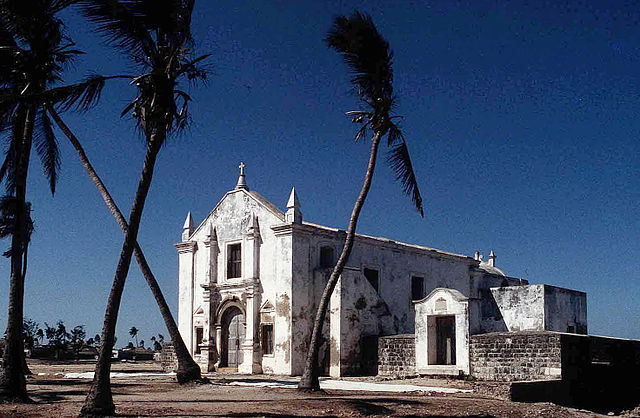 |
This is a file from the Wikimedia Commons. Information from its description page there is shown below.
Commons is a freely licensed media file repository. You can help.
|
| Description |
Santo António Church or Chapel. Ilha de Mozambique was first occupied by Portuguese explorers in the late 1400s. They quickly estblished a fort there, and with time quite a community sprang up, including a church, mosque, shops, and residences. This church is one of the architectural remains there. The island, a UNESCO World Heritage Site, is off the eastern coast of Africa and is part of the country of Mozambique. |
| Date |
14 February 2005, 14:18:40 |
| Source |
Flickr |
| Author |
Steve Evans from Bangalore, India |
| Reviewer |
Andre Engels |

 |
This file is licensed under the Creative Commons Attribution 2.0 Generic license. |
|
|
|
- You are free:
- to share – to copy, distribute and transmit the work
- to remix – to adapt the work
- Under the following conditions:
- attribution – You must attribute the work in the manner specified by the author or licensor (but not in any way that suggests that they endorse you or your use of the work).
http://creativecommons.org/licenses/by/2.0 CC-BY-2.0 Creative Commons Attribution 2.0 truetrue
|
 |
This image was originally posted to Flickr by babasteve at http://flickr.com/photos/64749744@N00/4779235. It was reviewed on 6 April 2007 by the FlickreviewR robot and was confirmed to be licensed under the terms of the cc-by-2.0. |
File usage
The following pages on Schools Wikipedia link to this image (list may be incomplete):
This file contains additional information, probably added from the digital camera or scanner used to create or digitize it. If the file has been modified from its original state, some details may not fully reflect the modified file.
Schools Wikipedia was created by children's charity SOS Childrens Villages. SOS Children believes education is an important part of a child's life. That's why we ensure they receive nursery care as well as high-quality primary and secondary education. When they leave school, we support the children in our care as they progress to vocational training or higher education. Sponsoring a child is the coolest way to help.


